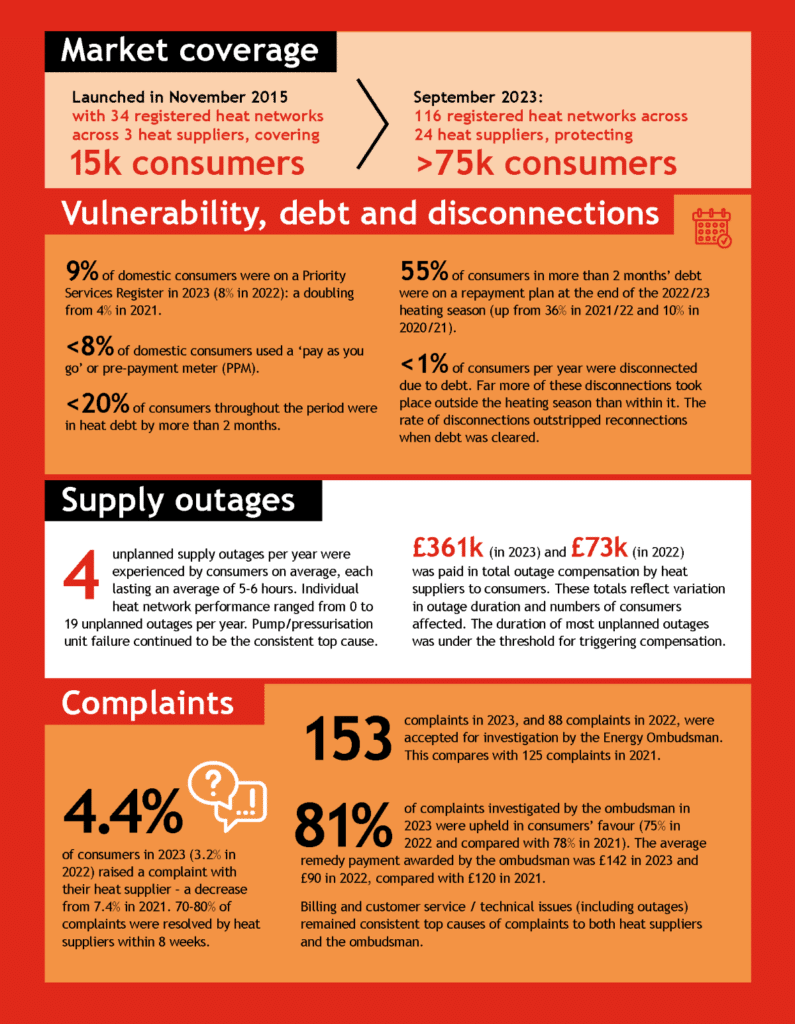Heat Trust, the consumer protection scheme for people living on communal and district heat networks, has reported significant growth over the past few years as the industry prepares for regulation.
Its latest report, covering the two-year period October 2021 to September 2023, highlights how the scheme has worked to protect customers during the energy crisis and help prepare the sector for forthcoming regulation.
Membership of the Heat Trust scheme has grown as heat networks expand and more operators seek to register in preparation for forthcoming regulation. The scheme now protects over 80,000 consumers – up from 15,000 at its launch in 2015.
Heat Trust says brining forward statutory regulation remains the only way to extend protections to all heat network customers and urges the new Labour government to press-on with regulation.
Stephen Knight, Director of Heat Trust said:
“Heat Trust has led, and continues to lead, the development of customer service standards across the heat networks sector and never has this been more important than during the energy crisis of the past three years. Our purpose has always been to champion the interests of the consumer and to fill the gap created by the lack of statutory regulation for heat networks.
“Whilst our scheme is protecting a growing number of consumers, only statutory regulation can provide necessary protection for all and tackle more structural issues of consumer detriment in the sector, such as poor technical performance and the exposure to unregulated commercial energy markets.
“We will continue to work closely with government and the industry to ensure that forthcoming regulations are fit for purpose and provide good outcomes for consumers whilst the heat network sector expands over coming decades.”
In its annual report covering the years 2022 and 2023, Heat Trust reports that:
· An increasing number of consumers are protected by the scheme (up 14,000 over the two years), with a diverse range of heat suppliers joining the scheme, including local authorities, housing associations, private developers and energy service companies.
· Supply outages remained an issue with an average of four unplanned supply outages experienced by consumers over the year, each lasting an average of 5-6 hours. There was a wide range of performance with the best heat networks experiencing no interruptions to supply and the worst experiencing almost 20 interruptions a year.
· More vulnerable customers are being identified and protected with 9% of consumers on a Priority Services Register in 2023 compared to only 4% in 2021.
· It has published a range of best practice guidance, including on supporting customers in financial difficulty.
· Complaints raised by consumers increased to 4.4% in 2023 compared to 3.2 % in 2022 but were down from a high of 7.4% in 2021. 81% of complaints investigated by the ombudsman in 2023 were upheld in the consumers’ favour.
· Debt remained an issue with just under 20% of customers more than two months in arears with bill payments.
· Disconnections were experienced by less than 1% of customers.
Heat networks are key to the UK’s heat decarbonisation plans, especially for higher density housing, where individual heat pumps may not be practical or cost efficient. A third of all new build homes are now on heat networks and it is estimated that over five million homes could be served by a heat network by 2050, a ten-fold increase from the estimated 500,000 homes currently on heat networks in the UK.
Government has encouraged heat network providers to register with Heat Trust in advance of the forthcoming statutory consumer protections, to ensure they are ready for regulation. Currently 28 heat suppliers covering 129 separate heat networks are signed-up to Heat Trust scheme.
For more information on Heat Trust and how to register with the scheme, please visit here.
To read of copy of Heat Trust’s annual report visit here.
























































